完美的粉红色水彩绘画示范
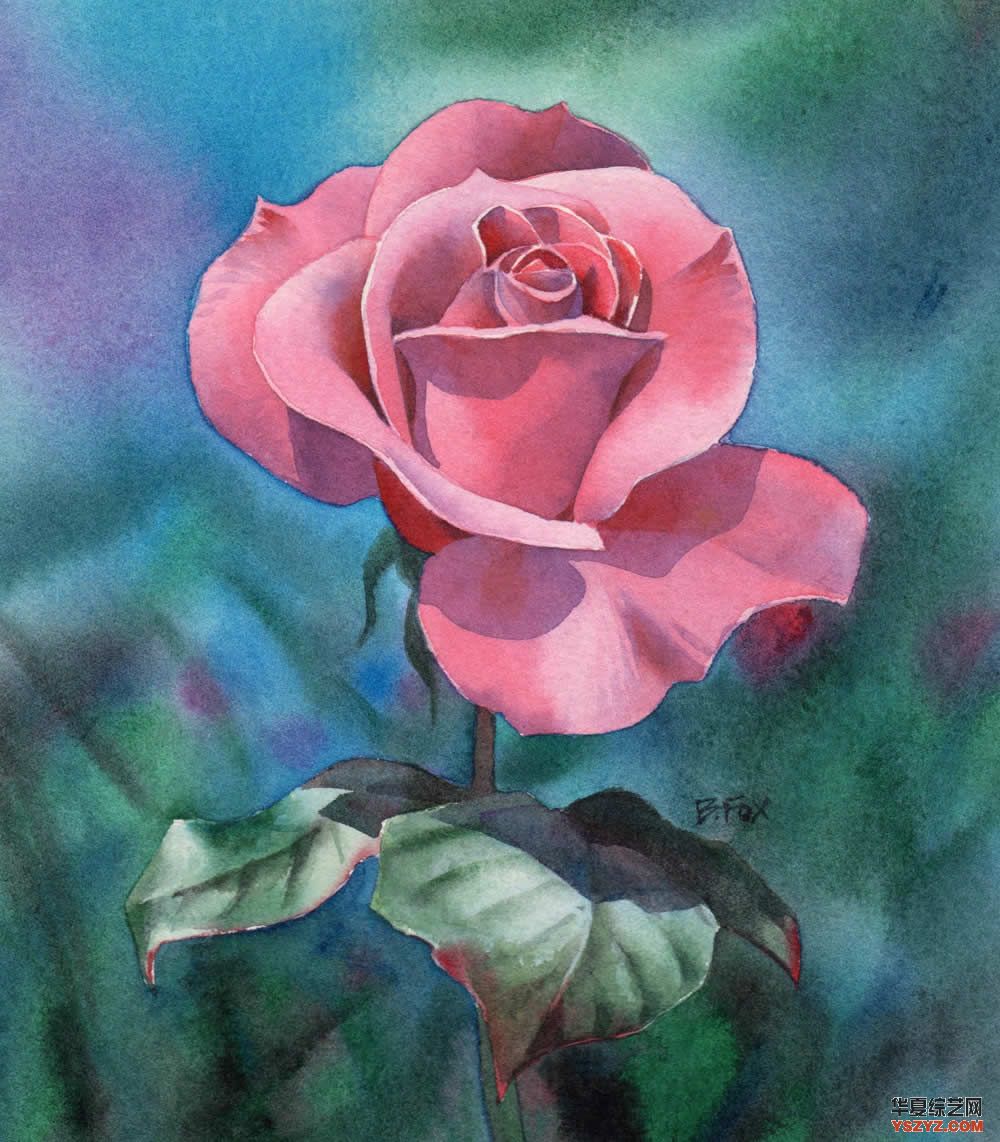
完美的粉红色水彩6 x 7”
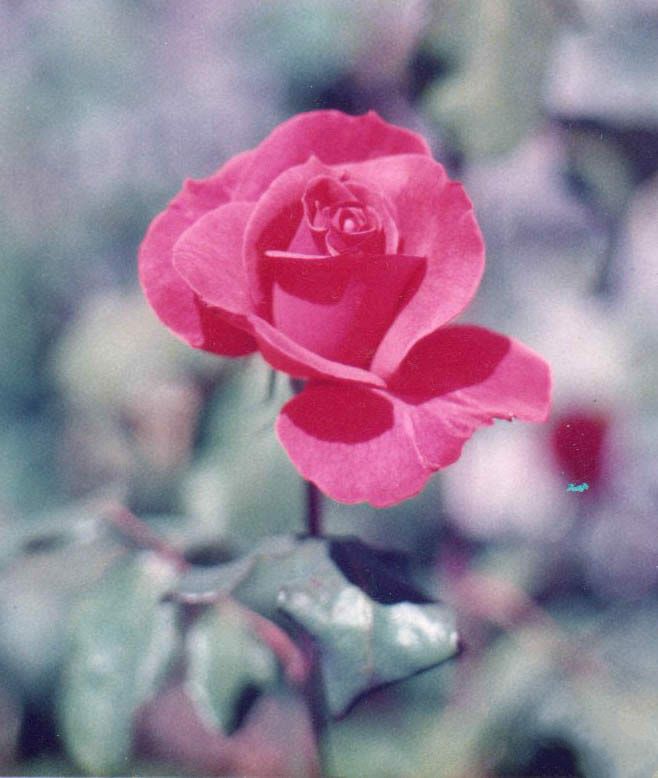
这里是照片我用来参考;采取了许多年前我的单反相机。
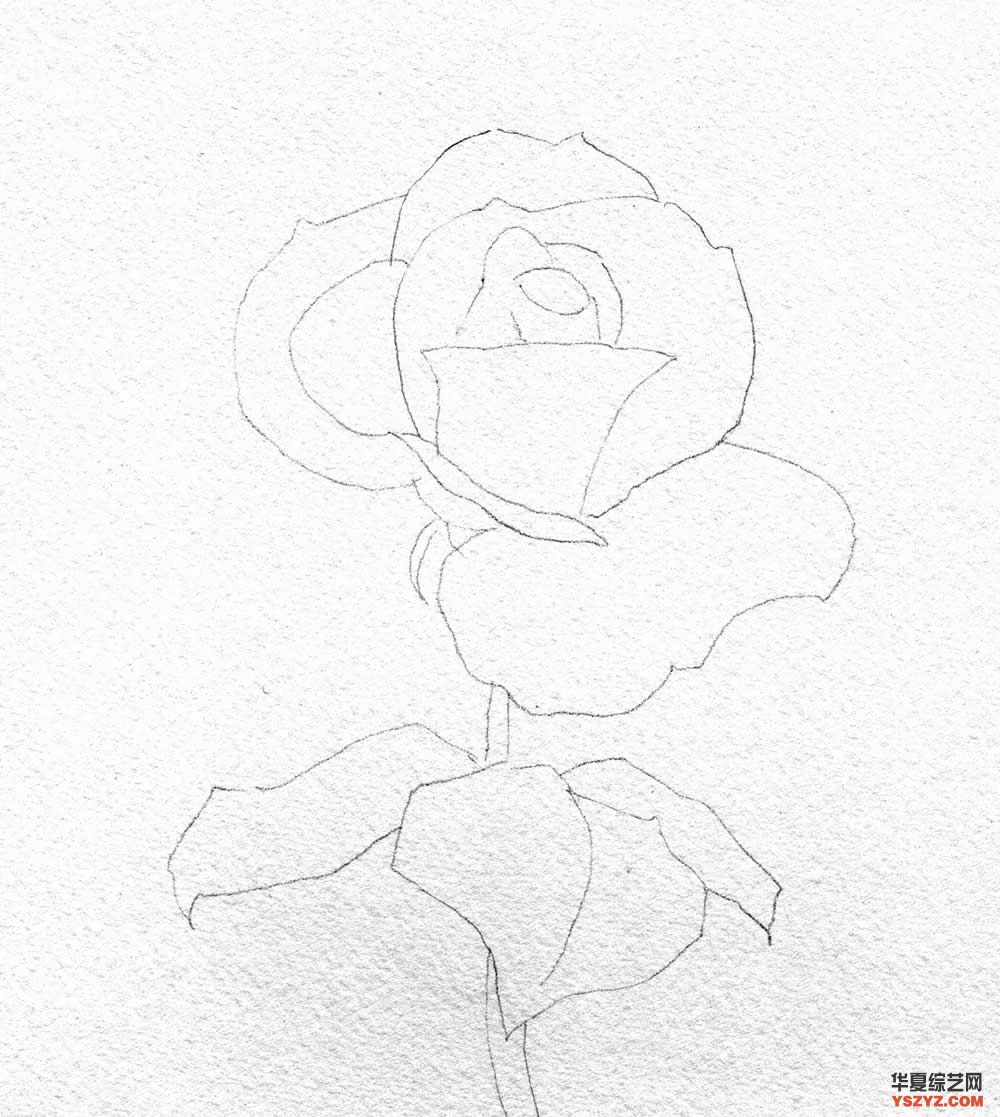
步骤1铅笔绘图
我做了一个快速的,铅笔绘图的玫瑰在水彩画纸。
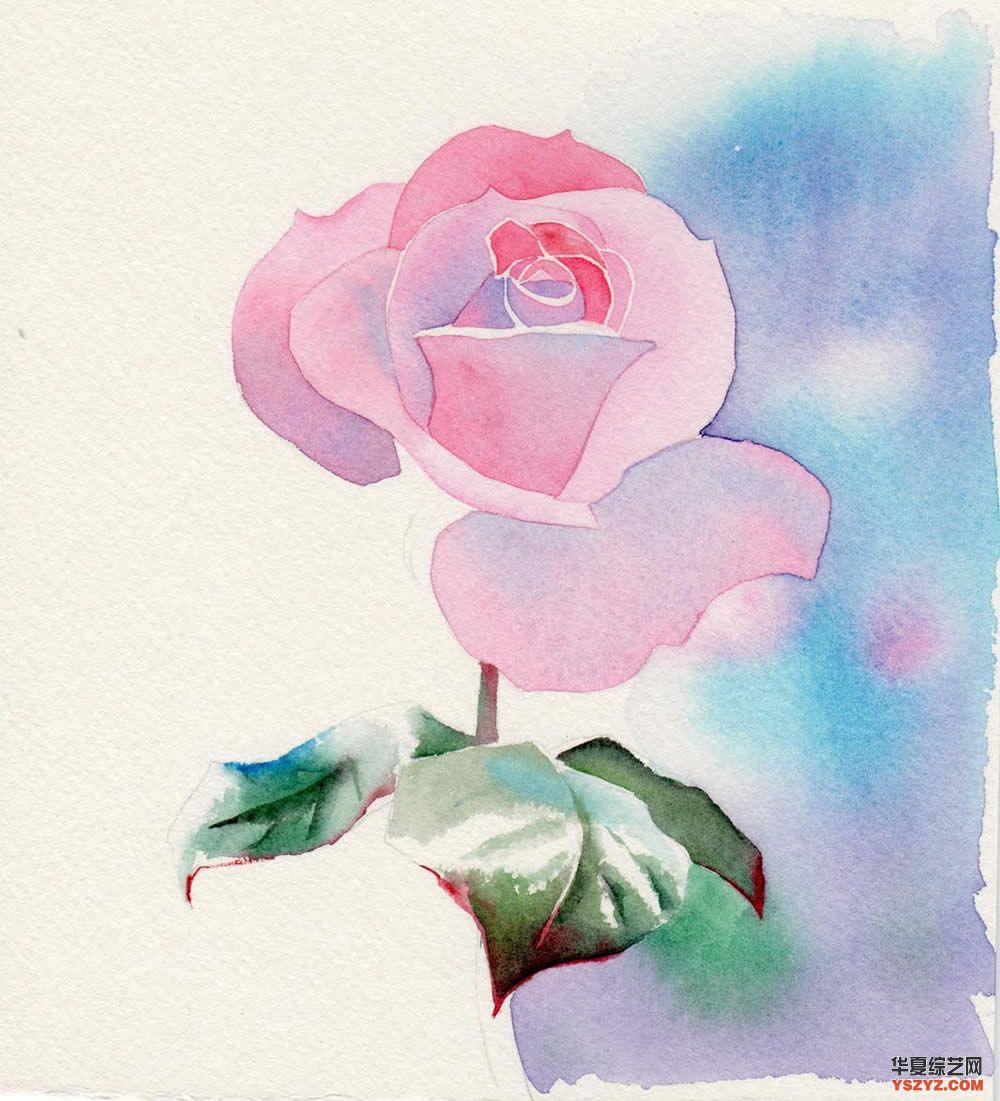
步骤2色场
每一片花瓣的玫瑰是单独画使用永久性的玫瑰,歌剧,温莎紫罗兰,钴蓝色。记住每一个其他的花瓣油漆,油漆洗不会碰到对方。
我画花瓣的方式有两种:
我湿的面积与普通水花瓣,然后添加纯颜色,让水混合。
见下面
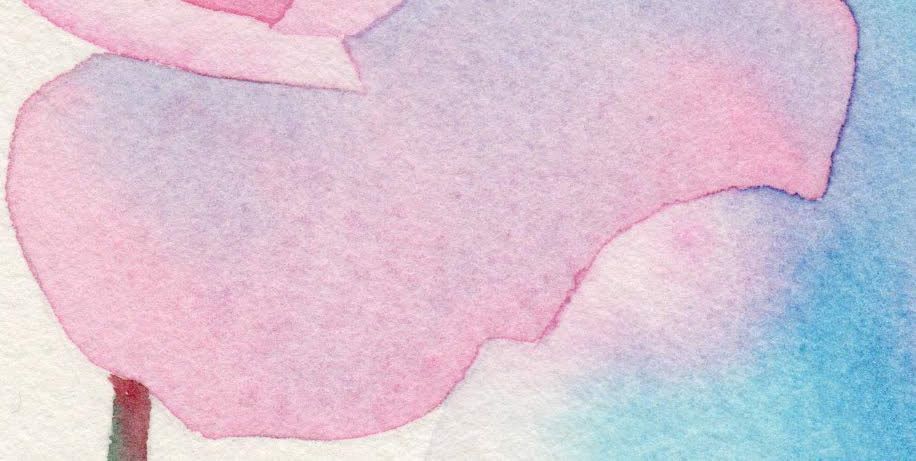
或
我画的和永久的玫瑰花瓣,然后立即添加一点钴蓝色的顶部边缘而油漆还是湿的。
见下面

我画的背景使用技巧。,让这篇文章非常湿,添加颜色,然后引爆纸张让颜色流在一起。我不尝试一次油漆整个背景。在这里你可以看到我画的背景在2会议。这是很大的优势,做一个有斑点的,淡的背景。
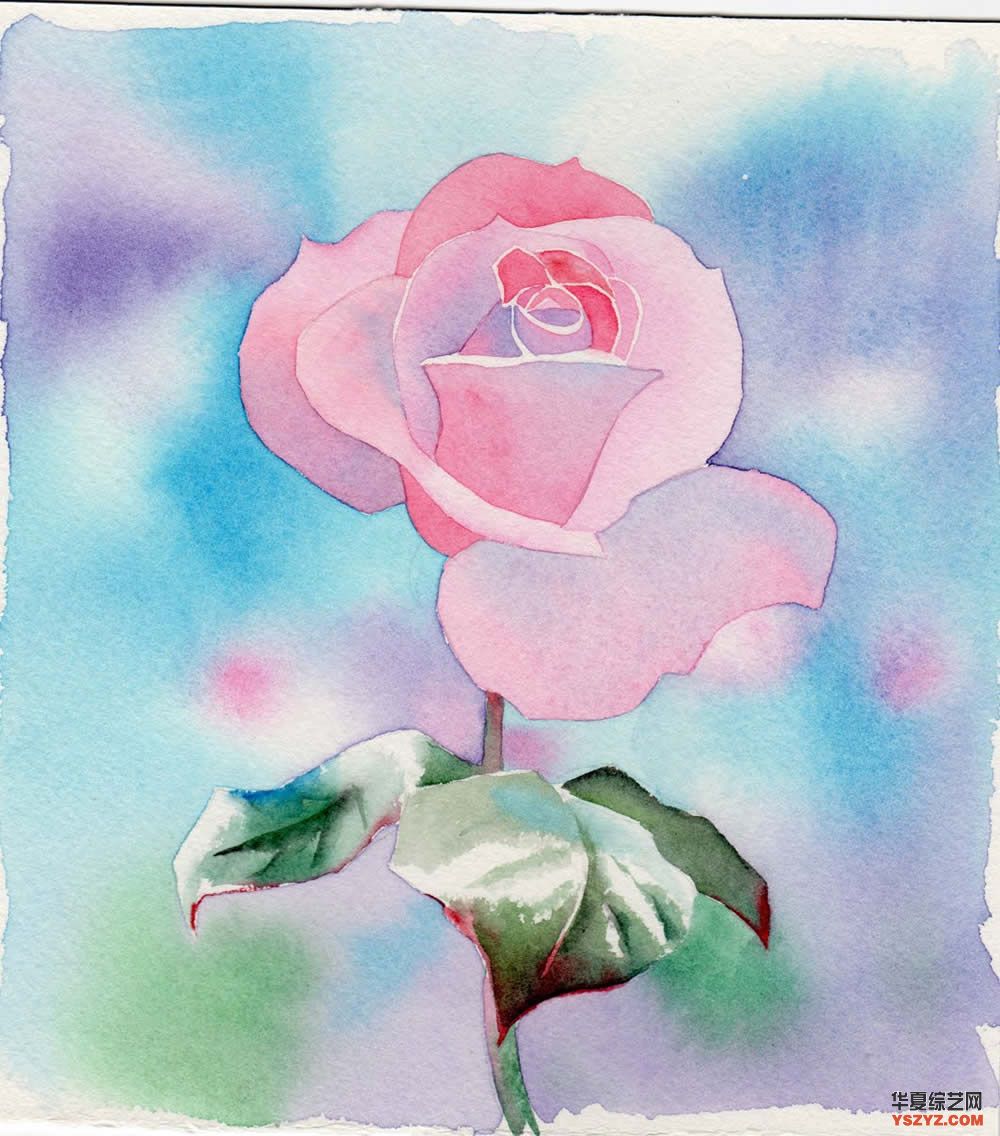
树叶都刷上绿色颜料,鲜绿色的,孔雀蓝,暗红。另外,我混合暗红和鲜绿色的得到一个黑色的。
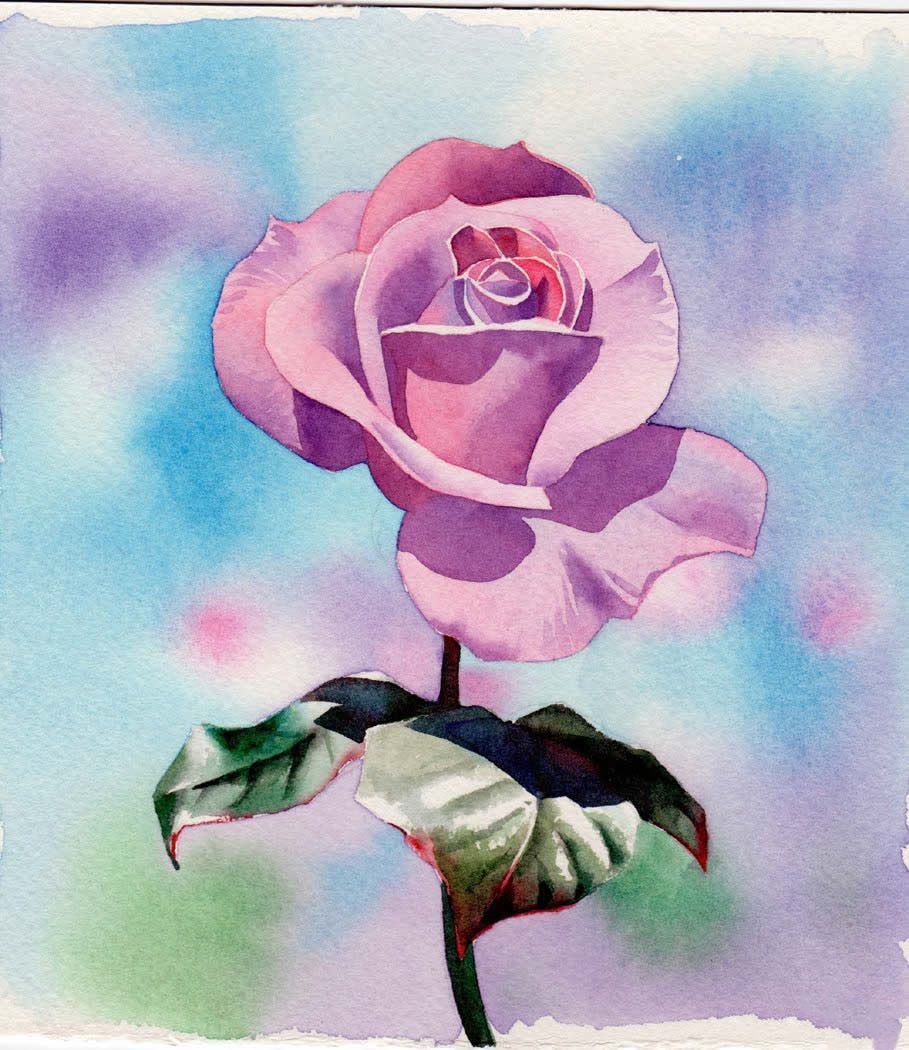
步骤3的阴影和纹理
投射阴影添加到花瓣,使用温莎紫有点歌剧这里和那里。记得每个区域分别漆,所以颜色不流血。
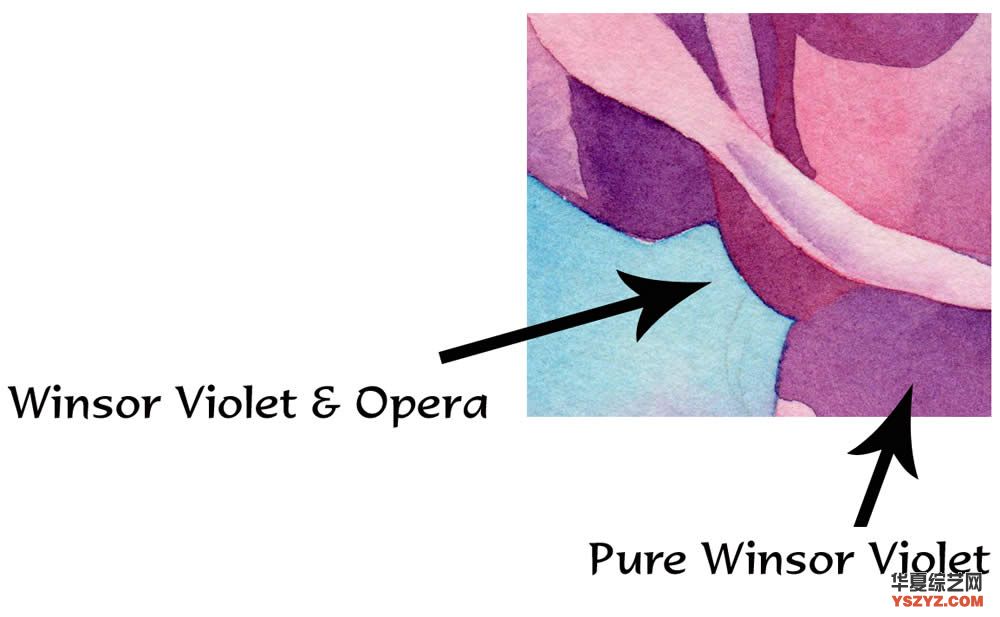
在叶子上的阴影是黑色的,鲜绿色的,和普鲁士蓝。
突然玫瑰尺寸!我还添加了一些细节纹理的花瓣,但这是之后完成的阴影是完全干燥的。
见下面
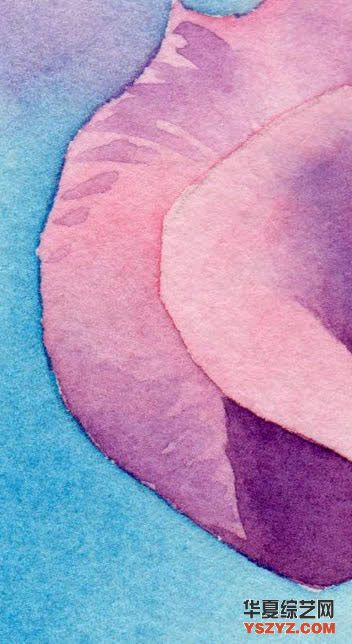
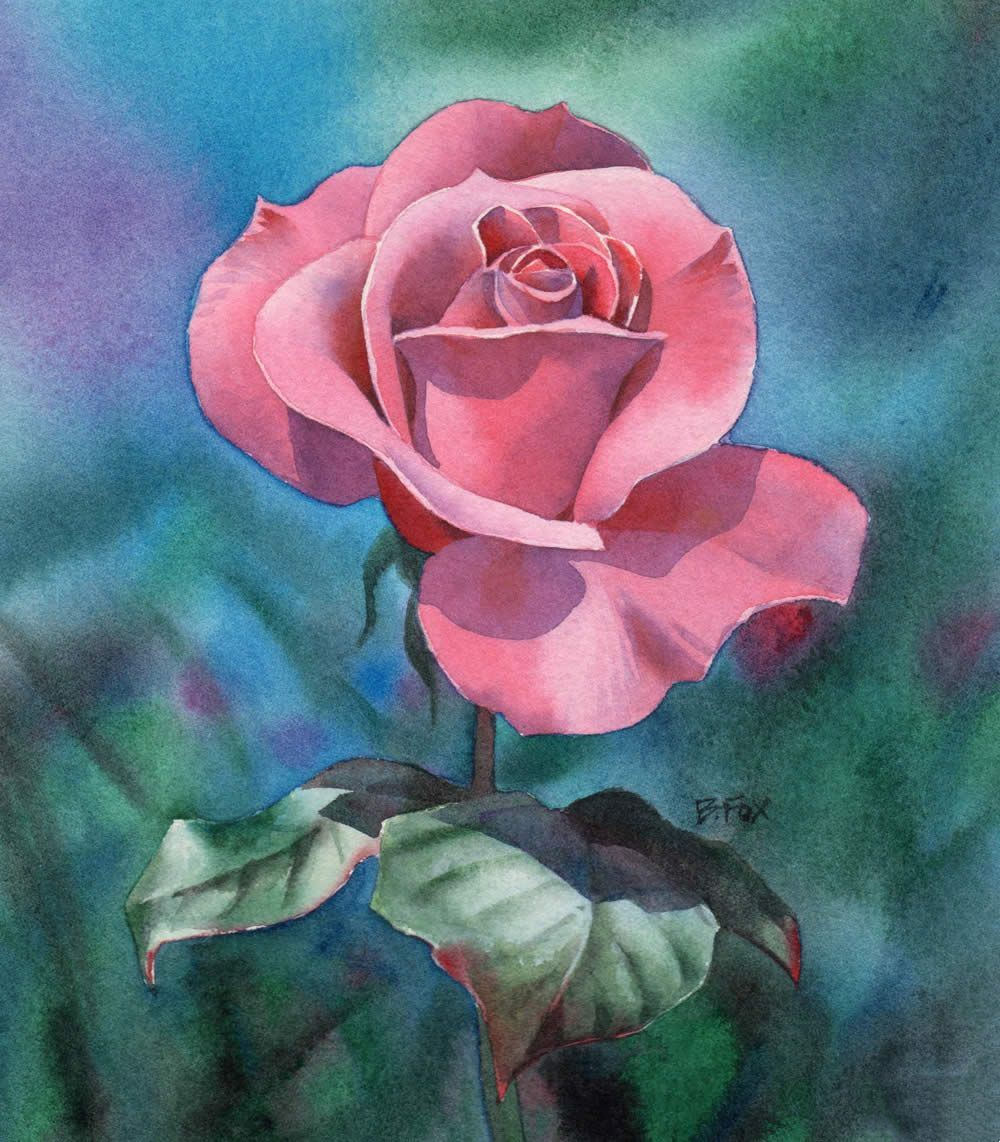
步骤4层/丰富的颜色
我添加了一层粉色的玫瑰,用歌剧和永久的玫瑰。再次,分别画每一片花瓣。
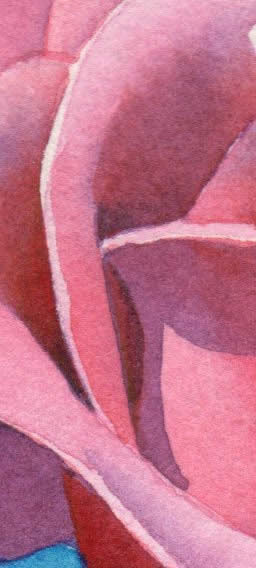
最后一层粉色洗不是画在一个平面的方式。我试图按照层次的光和黑暗的我看到的照片。我也没有漆边缘的花瓣与第二层。这给花更多的形状和尺寸。
我添加了一个非常黑暗的洗了背景使用铬绿,紫,蓝孔雀,温莎和普鲁士蓝,几小块的歌剧,和一些黑(紫红和鲜绿色的)行添加到湿洗的树叶,给人的印象。
我洗了水在每片叶子。这种“融化”有点沉重的色素,同时减少了一点对比度。太多的对比吸引注意力,我不想树叶为中心的利益在这幅画。
粉红色和凉爽的蓝色和绿色平衡彼此很好在这幅画。这幅画作为一个整体是很黑暗,但充满活力的粉色,玫瑰的价值对比使它关注的焦点。
有三个简单的方法可以使一些兀立在一幅画:
值的对比——阴影!
线围绕这个主题-你得到这个非常微妙的影响当每个区域分别是画。
互补色,粉红色的花朵,绿色的背景。
原文如下:
Perfectly Pink Watercolour Painting Demonstration
(Click Images for Larger Views)

Perfectly Pink watercolor 6 x 7"

Here is the photo I used for reference; taken many years ago with my SLR camera.

Step 1 Pencil Drawing
I did a quick, pencil drawing of the rose on watercolor paper.

Step 2 Color Field
Each petal of the rose is painted separately using Permanent Rose, Opera, Winsor Violet, and Cobalt Blue. Remember to paint every other petal, so the paint washes won’t run into each other.
I paint the petals in one of two ways:
A. I wet the area of the petal with plain water, then add pure colors, letting the water do the mixing.
see below

OR
B. I painted the petal with Permanent Rose, then immediately added a little Cobalt Blue along the top edge while the paint was still wet.
see below

I painted the background using technique A., getting the paper very wet, adding the color, then tipping the paper to let the colors flow together. I don’t try to paint the whole background at once. Here you can see that I painted the background in 2 sittings. This is the big advantage to doing a splotchy, washy background.

The leaves are painted with Sap Green, Viridian, Peacock Blue, and Alizarin Crimson. Plus, I mixed Alizarin Crimson and Viridian to get a black.

Step 3 Shadows and Texture
The cast shadows are added to the flower petals, using Winsor Violet with a bit of Opera here and there. Remember to paint every area separately, so the colors don’t bleed.

Cast Shadows on the leaves are Black, Viridian, and Prussian Blue.
Suddenly the rose has dimension! I also added some detail texture to some of the petals, but that is done after the shadows are completely dry.
see below


Step 4 More Layers/ Richer Colors
I added another layer of pink color over the rose, using Opera and Permanent Rose. Again, painting each petal separately.

The last layer of pink wash was not painted in a flat manner. I tried to follow the gradations of light and dark I saw on the photograph. I also didn’t paint the edge of the petal with the second layer. This gives the flower more shape and dimension.
I added a very dark wash to the background using Viridian, Peacock Blue, Winsor Violet, and Prussian Blue, with a few dabs of Opera, and some black (Alizarin Crimson and Viridian) lines added to the wet wash to give the impression of foliage.
I washed water over each leaf. This “melted” a bit of the heavy pigment and diminished the contrast a little. Too much contrast draws attention, and I don’t want the leaves to be the center of interest in this painting.
The pinks and cool blues and greens balance each other very well in this painting. The painting as a whole is quite dark, but the vibrant pink color, and the value contrast of the rose make it the center of attention.
There are 3 simple ways to make something stand out in a painting:
Value contrast – Shadows!
Lines around the subject -you get this very subtle effect when each area is painted seperately.
Complementary colors – The pink flower against the greenish background.








